Free home visits
with a local audiologist
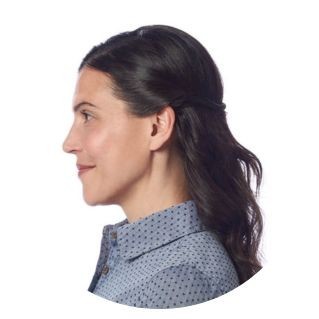
Their smaller size may mean that they are less visible to others, but it does also mean that they are not able to be as powerful as some of the larger, or behind-the-ear hearing aid styles.
However, if you only have mild to moderate hearing loss and are looking for a reasonably small, comfortable and easy-to-use hearing aid then In The Canal (ITC) could be a great choice for you.
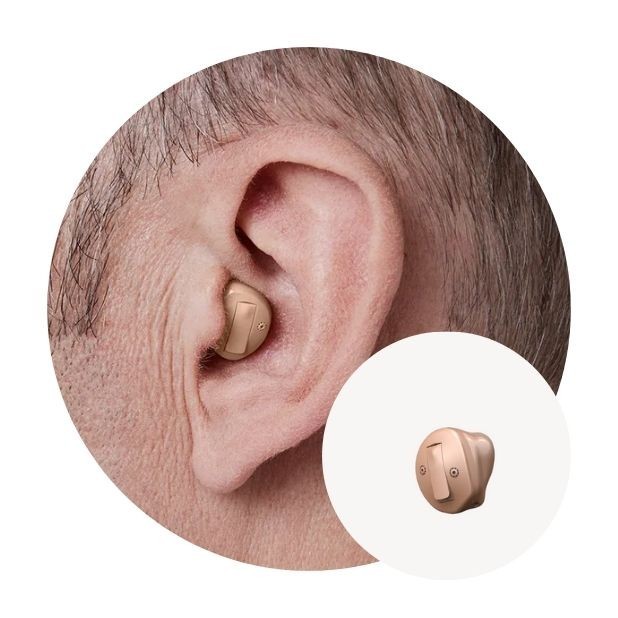
What is an In the Canal hearing aid? Also sometimes known as Half Shell hearing aids, In The Canal (ITC) hearing aids are very similar to In The Ear (ITE) aids, except that they are slightly smaller and so sit only in the lower part of your ear, filling the ear canal, but not the whole ear concha itself.
Again they are made to a custom mould of your ear and so promise a comfortable fit and a fairly small and inconspicuous design. However, they are still larger and therefore more noticeable than Completely In the Canal (CIC) hearing aids and Invisible In the Canal (IIC) hearing aids.
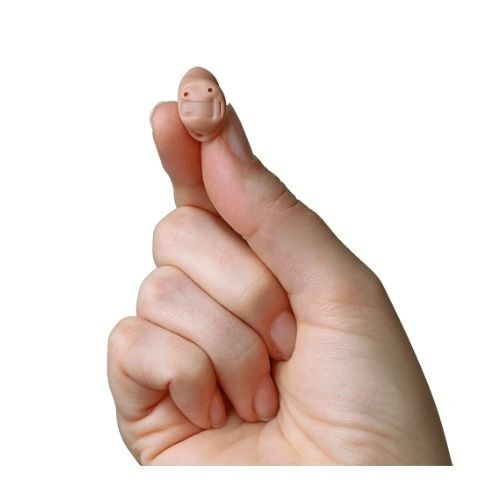
As they are made to a custom mould of your ear, In The Canal (ITC) hearing aids are extremely comfortable to wear. Their small size also means that it won’t be long before you are likely to have forgotten that you are wearing it at all – apart from the fact that your hearing is better!
Due to the fact that In the Canal (ITC) hearing aids are only just large enough to fill the entrance to your ear canal they are much more discreet than hearing aid styles such as Behind the Ear (BTE), Receiver In Canal (RIC) or In the Ear (ITE).
Many models are also available in a selection of colours to match your skin tone and so it is often difficult for other people to spot that you are wearing them at all.
Although the name suggests otherwise, In the Canal (ITC) hearing aids do not actually sit fully inside of the ear canal, so there is still room on the casing itself for a number of control buttons, switches or sliders.
This can make quickly adjusting the volume of the programme of your hearing aid quick and simple to do. However, their reduced size does mean that some more intricate adjustments may need to be made via an external remote control or smartphone app.
Whereas with most Behind the Ear (BTE) or Open / Receiver In Canal (RIC) hearing aids you have to hold the telephone slightly above or behind your ear, with In the Canal (ITC) hearing aids you can still use your phone in the completely natural position.
You are also normally still able to helmets and most other headgear naturally too.
Once you have done it a couple of times you are likely to find that you can quickly and simply pop your In the Canal (ITC) hearing aid in and out with the minimum of fuss.
Also because they are made to a custom mould of your ear then you will immediately know if they are not positioned correctly and should be able to easily adjust them to achieve a perfect fit.
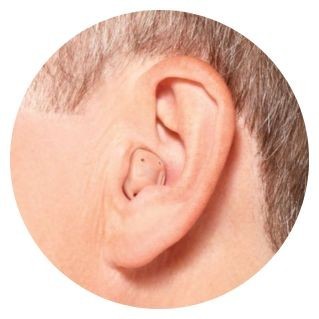
Although, of course, they are smaller and less visible than Behind the Ear (BTE), Open / Receiver In Canal (RIC) or In the Ear (ITE) hearing aids, In the Canal (ITC) hearing aids can still be seen by most people who get reasonably close to you.
However, most models are available in colours to match your skin tone and many users find that the trade-off between their ease of use and slight visibility is perfectly acceptable.
On the smaller style hearing aids, such as In the Canal (ITC) types, routine jobs such as cleaning, maintenance, changing the batteries, and even just insertion and removal, require a reasonably high level of manual dexterity. This may mean that they are not suitable for users with dexterity or visual impairments.
When an object completely fills the ear canal it can cause symptoms such as; hearing your own voice louder or it sounding hollow, feeling that your ear is blocked or chewing food sounding noisy or unpleasant.
Although to a lesser extent than the In the Ear (ITE) / Full Shell-style of hearing aids, In the Canal (ITC) / Half Shell types can still cause users to suffer from the annoying results of occlusion. However many styles now include a small vent, which can alleviate these symptoms.
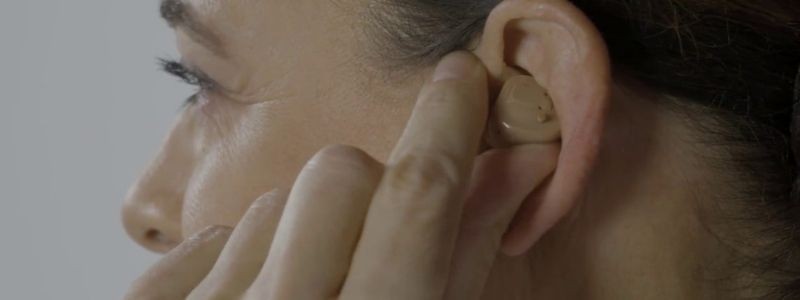
As a result of their smaller size, In the Canal (ITC) hearing aids are simply not able to include as large a processor/amplifier etc, or as many advanced technological features as some of the larger hearing aid styles.
This means that they may not be able to deliver enough power for them to be suitable for people with more advanced levels of hearing loss.
Again due to their smaller size, In the Canal (ITC) hearing aids may only be able to include some of the most basic controls on the casing itself. The majority of adjustments that you may wish to make will need to be made via an external device, such as a dedicated remote control or a smartphone app.
However, we find that many people who are opting for a smaller-sized hearing aid are doing so because they do not wish it to be obvious that they are wearing a hearing aid at all, and so inconspicuously adjusting their hearing aid via their mobile phone is actually a desirable feature.
The smaller your hearing aid is the smaller the size of the battery it can take. Most In the Canal (ITC) hearing aids are only able to include the smallest battery sizes, which inevitably produce smaller amounts of power.
This means that they are not able to support some of the more advanced features and also that the batteries need to be changed more often.
However, there is a growing field of rechargeable hearing aids which would at least mean that changing the batteries more frequently is no longer an issue.
The further a hearing aid goes into the ear the more susceptible it is to damage from natural moisture within the ear and ear wax.
If you are rigorous about following the advised care plan of cleaning, dehumidifying and general maintenance then you are unlikely to have too many problems, however, this commitment may be too time-consuming or simply off-putting for some people.
In-the-Canal (ITC) hearing aids offer a practical and discreet solution for mild to moderate hearing loss. Their compact design and customisation provide comfort and improved hearing without drawing attention. ITC aids are a convenient choice for those seeking a subtle hearing enhancement.
To find out more about In the Canal (ITC) hearing aids, or any of the other types of hearing aids that are available, contact our advisors and let us help you find the right hearing aid today.
Call us free on 0800 567 7621
Do not spend hundreds of pounds without getting a second opinion from us.
 Not only are the prices great, but the service is fantastic! Many thanks to your team.
Not only are the prices great, but the service is fantastic! Many thanks to your team.If you are looking at this page then it is likely that an audiologist has suggested that you purchase this particular hearing aid, so is this the best model for you?
In general, any audiologist will always recommend to you the model that best suits your needs. Here is a useful checklist to make sure that is the case.
If in doubt, feel free to give us a call. That's what we're here for. In the meantime, read all about our review of the best hearing aids for 2025 here
If you have significant hearing loss in both ears, you should be wearing two hearing aids. Here are the audiological reasons why:
Localisation: The brain decodes information from both ears and compares and contrasts them. By analysing the minuscule time delays as well as the difference in the loudness of each sound reaching the ears, the person is able to accurately locate a sound source. Simply put, if you have better hearing on one side than the other, you can't accurately tell what direction sounds are coming from.
Less amplification is required: A phenomenon known as “binaural summation” means that the hearing aids can be set at a lower and more natural volume setting than if you wore only one hearing aid.
Head shadow effect: High frequencies, the part of your hearing that gives clarity and meaning to speech sounds, cannot bend around your head. Only low frequencies can. Therefore if someone is talking on your unaided side you are likely to hear that they are speaking, but be unable to tell what they have said.
Noise reduction: The brain has its own built-in noise reduction which is only really effective when it is receiving information from both ears. If only one ear is aided, even with the best hearing aid in the world, it will be difficult for you to hear in background noise as your brain is trying to retain all of the sounds (including background noise) rather than filtering it out.
Sound quality: We are designed to hear in stereo. Only hearing from one side sounds a lot less natural to us.
Fancy some further reading on this topic? You can read about why two hearing aids are better than one in our article, hearing aids for both ears, here
For most people, the main benefit of a rechargeable hearing aid is simple convenience. We are used to plugging in our phones and other devices overnight for them to charge up. Here are some other pros and cons:
For anybody with poor dexterity or issues with their fingers, having a rechargeable aid makes a huge difference as normal hearing aid batteries are quite small and some people find them fiddly to change.
One downside is that if you forget to charge your hearing aid, then it is a problem that can't be instantly fixed. For most a 30-minute charge will get you at least two or three hours of hearing, but if you are the type of person who is likely to forget to plug them in regularly then you're probably better off with standard batteries.
Rechargeable aids are also a little bit bigger and are only available in Behind the Ear models.
Finally, just like with a mobile phone, the amount of charge you get on day one is not going to be the same as you get a few years down the line. Be sure to ask what the policy is with the manufacturer warranty when it comes to replacing the battery.
Looking for more information on rechargeable hearing aids? Read our dedicated page on the topic here
For most people, the answer is yes. But it's never that simple.
The majority of hearing problems affect the high frequencies a lot more than the low ones. Therefore open fitting hearing aids sound a lot more natural and ones that block your ears up can make your own voice sound like you are talking with your head in a bucket. Therefore in-ear aids tend to be less natural.
However the true answer is we can't tell until we have had a look in your ears to assess the size of your ear canal, and until we have tested your hearing to see which frequencies are being affected.
People with wider ear canals tend to have more flexibility, also there are open fitting modular CIC hearing aids now that do not block your ears.
There is also the age old rule to consider, that a hearing aid will not help you if it's sat in the drawer gathering dust. If the only hearing aid you would be happy wearing is one that people can't see, then that's what you should get.
Most people can adapt to any type of hearing aid, as long as they know what to expect. Have an honest conversation with your audiologist as to what your needs are.
Generally speaking, six or more. Unless it's none at all.
The number of channels a hearing aid has is often a simplistic way an audiologist will use to explain why one hearing aid is better than another, but channels are complex and it is really not that straightforward. Here are some reasons why:
Hearing aids amplify sounds of different frequencies by different amounts. Most people have lost more high frequencies than low and therefore need more amplification in the high frequencies. The range of sounds you hear are split into frequency bands or channels and the hearing aids are set to provide the right amount of hearing at each frequency level.
Less than six channels and this cannot be done with much accuracy, so six is the magic number. However, a six channel aid is typically very basic with few other features and is suitable only for hearing a single speaker in a quiet room. The number of channels is not what you should be looking at, it's more the rest of the technology that comes with them.
As a final note, different manufacturers have different approaches. One method is not necessarily better than any other. For example, some manufacturers have as many as 64 channels in their top aids. Most tend to have between 17 and 20. One manufacturer has no channels at all.
Hearing aids are easily lost, misplaced or damaged and typically are one of the most expensive personal possessions an individual can own. We offer hearing aid warranty coverage for £80 per year per aid. Find out more about this service we provide here
All our audiologists use the very latest technology and provide the full range of tests to accurately measure your hearing for free. Find out about what hearing healthcare services we offer all our customers here
Hearing Aid UK offers all their customers free home visiting services, even in a care home environment, for no extra cost. Including hearing tests, fittings, maintenance, check-ups and much more in the comfort of your own home and at your convenience. Find out more information about our home visits here
Here, at Hearing Aid UK, we are dedicated to offering low hearing aid prices. We achieve this by having no head office and low marketing costs. Our hearing aid prices are amongst the lowest you will find anywhere in the world. Explore our prices, brands, and models here
When we refer to a product as 'Latest Launch', we mean it is the latest to be released on the market.
When we refer to a product as 'New', we mean that the product is the newest hearing aid model on the market.
When we refer to a product as 'Superseded', we mean that there is a newer range available which replaces and improves on this product.
When we refer to a product as an 'Older Model', we mean that it is has been superseded by at least two more recent hearing aid ranges.